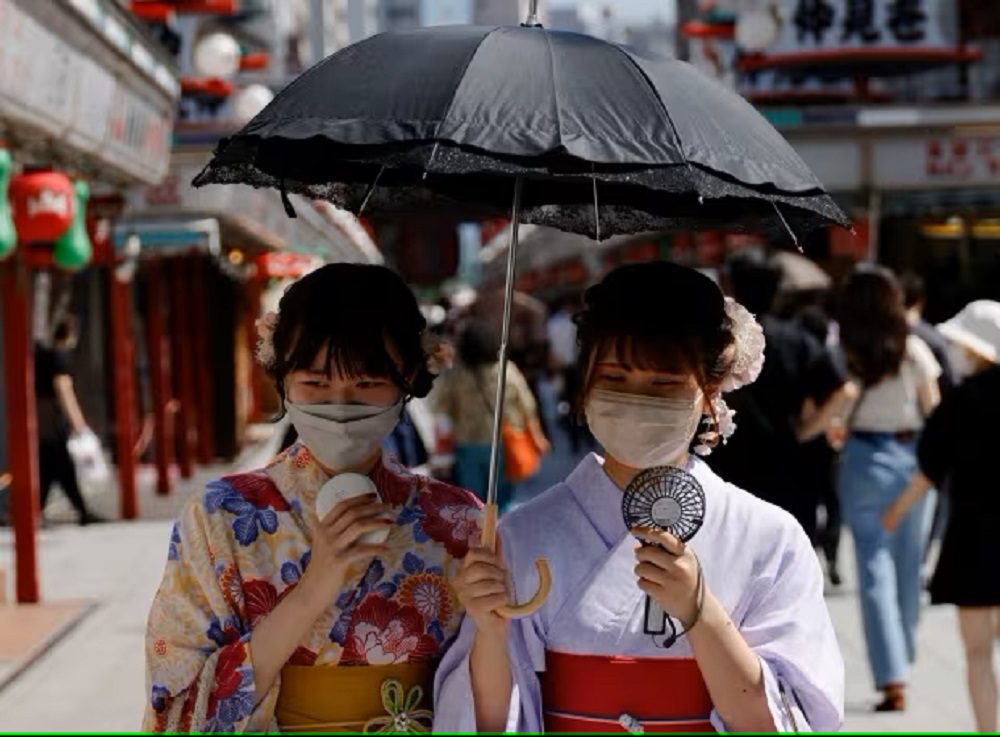News
Beijing Records 2nd Highest Temperature in History

Records-breaking temperatures are being experienced in Beijing and other regions of northern China, and the government has told citizens to spend less time outside. As citizens continue to experience weather extremes that may go down in history during the past few days, many Chinese cities continued to issue heat and rainfall response warnings on Friday.
The China Meteorological Administration (CMA) reported that heavy rainfall was recorded at 2,130 stations, and high temperatures were recorded at 2,830 sites nationwide between Wednesday and Thursday.
As the peak temperature in Beijing, Tianjin, Hebei, and Shandong is anticipated to exceed 40 C on Friday, the National Meteorological Centre (NMC) continued to issue high temperature orange warnings, the second highest within China’s four-level weather warming system.
As of 9 am on Friday, the CMA has begun its level IV emergency response to the high temperatures.
One of the places severely hit by the heat wave was Beijing, the capital of North China. Beijing’s temperature on Thursday was 41.1 C, shattering the previous record for the month of June of 40.6 C set in 1961. The second-highest ground surface temperature on record was also recorded on Thursday when the same meteorological station measured 71.8 C in the afternoon.
Most parts of Beijing experienced highs of 39 C or more on Thursday. Such high temperatures are expected to last for the foreseeable future, according to weather predictions.
The highest of China’s four-level weather warning system, the red warning signal for excessive temperatures, was issued by the Beijing Meteorological Station on Friday morning. Beijing last issued a warning of this nature in 2014.
China’s capital Beijing once more experienced high temperatures above 40 C on Friday afternoon. Since the creation of meteorological observation stations in Beijing, high temperatures above 40 C have never been recorded for two consecutive days, according to Zhang Yingxin, chief forecaster at the Beijing Meteorological Station.
The Beijing Meteorological Station predicts that Beijing will have hot weather from Friday through Sunday, with highs in most places reaching 37 to 40 degrees. Beijing’s high temperature is predicted to drop back to 34 C on Monday.
According to Beijing Meteorological Station’s top forecaster Zhao Wei, this heat wave is intense, protracted, and extensive.
The Beijing-Tianjin-Hebei region is under the grip of a stronger warm air mass starting on Wednesday, and the influence lasts for a long time. The sky is clear and cloudless due to the high-pressure ridge scenario, which favours and accelerates warming through radiation, according to Zhao for China Youth Daily.
Additionally, Zhao added, “prolonged sunshine favours the maintenance of high temperatures, while low air humidity and dry weather favour increases in temperatures.”
Since 1951, Beijing has only had a maximum of 11 June high temperatures exceeding 35 degrees Celsius in a single year, in 1952 and 2000, respectively, and a maximum of 5 days with temperatures above 37 degrees Celsius, in 1952. Beijing has so far this week recorded nine days with high temperatures over 35 C and five days with high temperatures over 37 C in June 2023.
Meanwhile, the temperatures in Tianjin and Hebei, both in North China, are extremely high.
The Tianjin Meteorological Station predicts that on Friday, highs in central Tianjin will reach 40 C. On Friday, numerous cities were expected to see high temperatures of 41 to 42 C, according to the Hebei Province meteorological station.
East and South China are threatened by heavy rain, while people of North China must endure the heat. The NMC issued a yellow rain warning on Friday morning. Forecasters predict that from Friday to Saturday, there will be heavy rain, including thunderstorms, in some areas of the provinces and regions of Zhejiang, Anhui, Jiangxi, and Fujian in East China as well as Guangxi and Guangdong in South China.
Unusual weather has been more prevalent this summer all throughout the world. The El Nino phenomenon has developed and is anticipated to endure into the winter, according to a warning from the US National Oceanic and Atmospheric Administration on June 8. Experts from the CMA claim that the recent advent of the El Nino phenomenon has led to a high frequency of catastrophic weather events in China.
According to Zhou Bing, head of CMA’s climate service, both in terms of China and the rest of the world, this year’s climate has been extremely unusual. According to the emergence of the El Nino event, the planet is unquestionably hotter this year than it would be in 2022, he said the Global Times.
El Nino’s progression will result in increased summer rainfall in southern China and decreased summer rainfall in the north, creating a situation of floods in the south and drought in the north, according to Zhou.
According to him, northern China is not likely to see an extended period of high heat. However, years with El Nino tend to have higher average temperatures because of its influence.
Due to China’s large area and varied climate, heat waves have frequently been a problem, especially during the summer. China has a diverse range of climatic conditions, including intense heat in some areas.






























